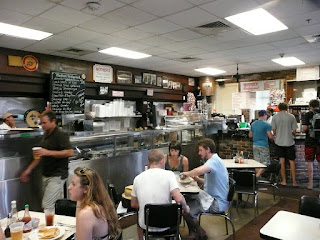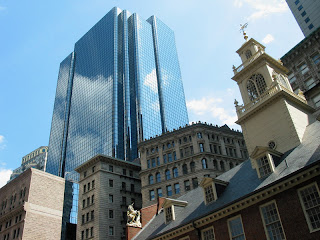Mardi Gras season is in full swing down here in New Orleans. My fence is covered in beads, all of the kids are out of school, police barricades line the neutral zone, and the office is full of king cake. In short, life is good!
Mardi Gras is much more than the day before lent down here in the Big Easy. It is a carnival season with as much pomp, fanfare, and time off of work as Memorial Day, Easter, or (let's be honest) Thanksgiving. The houses on my street are always decorated for three holidays: Halloween, Christmas, and Mardi Gras! My wife, being only a (relatively) recent transplant from Indiana, finds this extremely unusual. Locals routinely pour a year of hard work and preparation into each Mardi Gras (just look at those floats!). It is a local staple that every proper New Orleanian thoroughly enjoys, and it's also fantastic for the tourist trade.
Bill is the only one in the office that is part of a parade krewe (he's riding in the Elk truck parade on Fat Tuesday), but all of us have Mardi Gras preparations to do. For me, this year's Mardi Gras involves two big events.
First, I will be heading down into the French Quarter in costume on Fat Tuesday. This is a Mardi Gras tradition that my friends and I do every year.
Second, and far more importantly, my wife Liz will be seeing her first proper Mardi Gras parade! Believe it or not, Liz has lived down here for three years and still hasn't seen one of the big parades. I can't really blame her though. She was pregnant during her first Mardi Gras, and was in no mood to have drunken krewes throwing beads at her face while being the default designated driver. Last year I convinced her to go with me to see Endymion, but the parade got horridly rained out and totally screwed up our plans. However, this year we are going to see Bacchus come Hell or high water!
In order to ease her into the experience, I took her down to the Covington parade Olympia last weekend. Bill had just gotten a place that was a block away from the parade route, so it was very convenient. I also promised Liz that I would drive. Covington, as you may know, is on the Northshore of Lake Pontchartrain. There are plenty of parades on the Northshore, but they're nothing like the huge parades that have been rolling in New Orleans since forever. Liz, however, was rather amazed by Olympia.
Before going to Olympia, Liz had only been exposed to the Abita Springs annual Push Mow Mardi Gras parade. Yes, push mow does mean lawn mower. The Krewe of Push Mow often rolls with lawn mowers, either pushed or riding. There's also cars, scooters, golf carts, bikes, and even a few trucks; but that should give you a sense of the scale. Small local parades like the Push Mow are a staple of towns all around south Louisiana; everybody get's into the Mardi Gras spirit! The Push Mow parade route goes right by my house, so we can't miss it. The first year Liz was perplexed, but she has quickly warmed up to the little parade.
 |
| My son Ieuan at the 2012 Push Mow |
Olympia, however, is an entirely different sort of parade. Covington is a much bigger town than Abita, and Olympia rolls with an entirely different scale of float. At the Push Mow, little girls throw stuffed animals at you from the back of a pickup. At Olympia, floats roll down the street lined with krewe members, glowing neon lights, and pounding music. Throws get tossed down at your uplifted hands (or face) as your cries of "Throw me something mister!" blend into the similar pleas of the surrounding crowd.
But as different as Olympia is from the Push Mow, Bacchus is different from Olympia. Bacchus is a Mardi Gras tradition, but going back only to 1968. It was founded by Owen "Pip" Brennan (of the popular New Orleans Restaurant) as a way to buck the stagnating Mardi Gras regime and inject new life and new accessibility into the Carnival season. Bacchus rolls on Sunday evening before Fat Tuesday (a major faux pas in the 60's), always has a celebrity King (this year it is Will Ferrel!), and was founded on the principle of having the biggest, most outlandish floats of Mardi Gras! Bacchus is a true super parade with more than 1,350 members and 33 animated super-floats. It will be a wild time for sure and something Liz will definitely never forget. I will be sure to report back on Monday with pictures, so stay tuned.
 |
| Bacchus Officers float - New Orleans and All That Jazz |
Accordingly, I have acquired a sweet leather biker jacket and decked it out in pieces of old tire and a variety of trinkets scavenged from a blasted, deserted, radioactive necropolis; or at least that's what they look like. I've even got a gas mask, bullet necklace, and an old-beat up baseball bat all ready to go. I've got all my tropes covered except a broken music box and a scrappy little dog. Everybody else in the gang has reported high levels of costume success this year, so here's hoping we make the news again!
The down side is that I have to fly out to New York at 6:00 p.m. Mardi Gras day. At least I'll be taking a cab to the airport. As long as I remember to take off my baseball bat and bullet necklace I should be able to mix with the drunken tourists and stumble my way through security.
















































